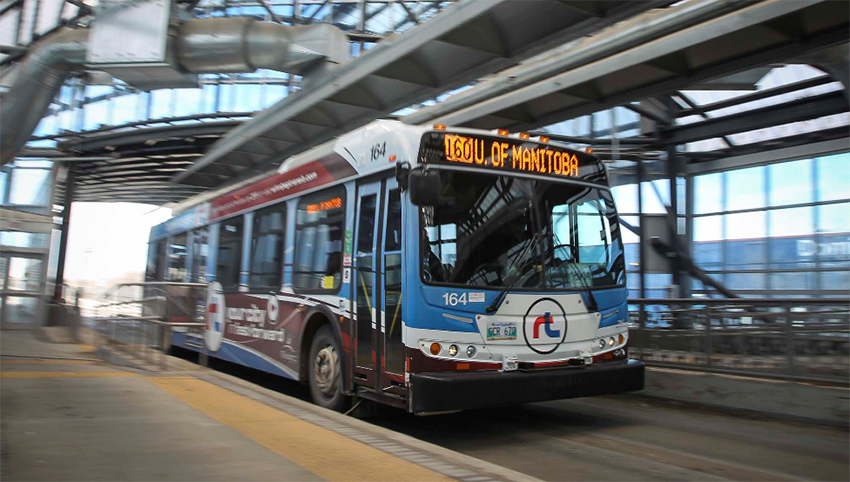
By Brent Bellamy, Creative Director and Architect
Republished with permission courtesy of the Winnipeg Free Press.
Politicians yet to promote vision for Winnipeg
Nearly 55 per cent of Manitoba’s population lives inside Winnipeg’s Perimeter Highway, representing more than 60 per cent of the province’s employment and two-thirds of its GDP. Despite this concentration of people and commerce, urban issues have seemingly not been a central focus of the provincial election campaign. Manitoba’s provincial budget is 12 times greater than Winnipeg’s municipal budget, meaning the province’s values and civic priorities have a substantial influence on the type of city we build.
A recent Winnipeg Free Press poll found the top priority for Winnipeg voters is roads and potholes. It was identified as being the most important issue more than twice as often as health care or taxes. While this result may be disheartening for those hoping for a more inspiring election dialogue, it is hardly surprising.
We have built a city that has made the car a central focus our lifestyle. For most Winnipeggers, almost every activity done outside of the home requires a drive in an automobile. It logically follows that potholes would become the key voter concern.
The way in which the provincial government chooses to respond to this issue will affect the shape and civic competitiveness of Winnipeg. Will the choice be simply to fill the potholes and hope they don’t come back, or will the province engage in more holistic solutions that address the root causes of our infrastructure deficit?
One such response would be to invest in effective and wide-reaching rapid transit. Every major city in Canada — except Winnipeg — has embraced rapid transit as a means of addressing infrastructure deficits, urban mobility and quality-of-life issues. Strategically positioning transit lines can promote targeted infill development, influence urban sprawl and grow the economy.
Increasing density, improving the tax base and reducing car use — and in turn road wear — all work together to make infrastructure funding more sustainable.
Calgary, with a 59-kilometre rapid-transit network, Edmonton with 24 kilometres (soon to be 37) and Vancouver with 68 kilometres, have all used this strategy to great success, increasing ridership and realizing billions of dollars worth of private investment along their transit corridors.
The efficiency of Ottawa’s 43-kilometre network has resulted in 22 per cent of the population taking public transit to work, compared with only 13 per cent in Winnipeg, supported by its meagre three-kilometre line.
Mayor Brian Bowman was elected on a pledge to complete all six of Winnipeg’s proposed bus-rapid-transit corridors by 2030, a multibillion-dollar promise that can’t even begin without commitment and vision alignment from all public levels.
With a new federal government prioritizing green infrastructure, Canadian cities are scrambling to line up for funding to grow their rapid-transit systems. A question to be asked in this election is, will the province allow Winnipeg to join the line?
Another provincially controlled issue affecting the city’s ability to maintain its infrastructure and services is the growth of bedroom communities that do not pay into the civic tax base. During the last 10 years, Winnipeg has grown by 11 per cent while the surrounding metropolitan-area communities have grown by 20 per cent. This growth has been fuelled by artificially low rural taxes that are subsidized by property owners within the city. At least half of the workforce in these areas commutes into Winnipeg daily, using city roads and services without contributing equitably to their maintenance.
There has been little political will from the province to tackle this issue and begin the process of developing an economic development strategy for the capital region. At some point, a provincial plan that more evenly distributes the costs of servicing the region will need to be established, understanding the prosperity of Winnipeg’s outlying communities is inextricably linked to the health of the city itself.
A provincial policy issue that could have a significant effect on the growth of Winnipeg’s downtown is the continued use of tax-increment financing (TIF) to support new private development. TIF financing is a system that rebates for a specified length of time, the anticipated increase in property and school taxes new development will create.
The strategy has largely been the engine behind the renewal of Winnipeg’s downtown, responsible for creating thousands of new residential units during the last seven years. Without the TIF system, True North Square and all the new towers, proposed and under construction in the skyline today, would likely not have happened. A key TIF initiative called the Live Downtown Rental Development Grant Program expires this year, and without a renewed commitment from the provincial government, the momentum that has been established in the downtown would likely stop.
The provincial government can promote urban growth not only by embracing policies such as tax-increment financing, but also through the individual projects it chooses to pursue. Expediting the long-delayed parkade in the city’s East Exchange District would spur residential development that has been stalled for five years in anticipation of its construction. Investing in urban cycling infrastructure would further improve quality-of-life and mobility issues across the city. Committing to redevelop the nine provincially owned downtown surface parking lots could be a catalyst for infill growth and renewal. The redevelopment of the downtown Hudson’s Bay, the creation of more social and student housing in the city centre, a push to establish a downtown presence for the U of M while continuing to support the urban expansion of the U of W and Red River College, are all ideas the province is able to take the lead on that would have a great effect on Winnipeg.
The provincial election campaign has had little debate of the big urban moves that might take Winnipeg forward in ways we have not seen in the past. Courageous ideas such as relocation of the rail lines, or use of the floodway to control river levels in the city throughout the year, have taken a back seat in the debate. Before we head to the polls Tuesday, hopefully candidates will take this last opportunity to celebrate their urban ideas in a cohesive vision that captures our imagination and inspires us to dream about what the future of Winnipeg might be.
Brent Bellamy is creative director at Number Ten Architectural Group.
bbellamy@numberten.com

